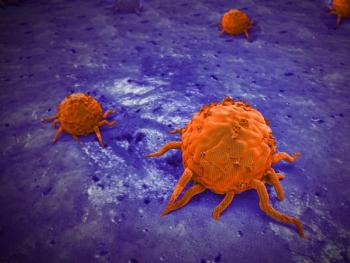
Oncology NEWS International
- Oncology NEWS International Vol 6 No 8
- Volume 6
- Issue 8
Experts Debate Role of Brachytherapy for Prostate Cancer
CHICAGO--When physicians squared off on the issue of brachytherapy (interstitial radioactive seed placement) for prostate cancer at the Prostate Cancer Shootout II conference, the lines could not have been drawn more clearly.
CHICAGO--When physicians squared off on the issue of brachytherapy (interstitialradioactive seed placement) for prostate cancer at the Prostate CancerShootout II conference, the lines could not have been drawn more clearly.
Brachytherapy proponent John C. Blasko, MD, professor of radiation oncology,University of Washington School of Medicine, Seattle, said that "brachytherapymay be the simplest, least expensive, and best tolerated treatment availablefor early stage prostate cancer." For locally advanced disease, hesaid, "the addition of brachytherapy provides high intraprostate radiationdoses, which results in improved local control but less extraprostate tissuetoxicity relative to external beam radiotherapy."
However, Jeffrey D. Forman, MD, professor of radiation oncology, WayneState University, Detroit, said that brachytherapy is still unproved. Dataon the procedure are based on short-term surrogate measures of effectiveness,such as positive biopsy rates and PSA levels, he said, so no clear survivaladvantage has been shown.
In addition, Dr. Forman said, the optimal candidates for brachytherapyhave not been defined, the adequacy of seed implantation is highly variable,and correction of improperly placed radioactive seeds is difficult if notimpossible.
In Dr. Blasko's experience, brachy-therapy has been equivalent to radicalprostatectomy and external beam irradiation in the treatment of localizedprostate cancer. He studied 320 consecutive men with clinically stagedT1b or T2a-b disease, Gleason score of 2 to 7, initial median PSA levelof 7.9 ng/mL, and average age of 70 years.
At seven years post-treatment, 97% of the men exhibited local controlof the disease, 95% were free of distant metas-tases, 92% were free ofprostate cancer, and 99% had not died from cancer.
Dr. Blasko's studies also have shown brachytherapy in combination withexternal beam irradiation to be superior to conventional external beamirradiation alone for men with locally advanced prostate cancer.
He studied 232 consecutive men with clinically staged prostate cancerranging from stage T1b to T3. More than one third of patients (36%) hadGleason scores higher than 6. The mean PSA level was 15.6 ng/mL. At 96months, 91% of the men had local control of their prostate cancer, 83%had no distant metastases, 74% were disease free, and 96% had not diedof cancer.
However, Dr. Forman believes that Dr. Blasko's comparisons are "potentiallymisleading." The men in Dr. Blasko's studies had median PSA levelsof 10 ng/mL, he said, while those in Southwestern Oncology Group trialsof external beam irradiation had median PSA levels in excess of 40 ng/mL.
In addition, Dr. Forman said, "the patients with a large volumeof extracapsular disease who do well with combination brachytherapy andexternal beam irradiation also would do well with high-dose external beamirradiation by itself, which may be cheaper."
Technical Difficulties
While there are technical problems with all forms of treatment for prostatecancer, they are well known and, for the most part, manageable. With brachy-therapy,however, Dr. Forman pointed out, "we are not even sure how to definean inadequate implant. Is it when the total amount of radiation is toosmall for the volume of the gland? Should we get post-treatment volumehistograms to assess the adequacy of the implants? Should there be someminimum dose at the periphery of the gland for the implant to be judgedadequate?"
Moreover, he said, there is wide disparity in performance of brachytherapy.Even in the best of hands, between 15% and 20% of interstitial seed implantationsare not ideal, and in the community at large, many radiation oncologistsare "on the upswing of the learning curve," Dr. Forman said.
Although it is possible to re-enter the prostate gland and place moreradioactive seeds in areas that were missed the first time around, fewradiation oncolo-gists have the ability to do so, he said.
And, he asked, what can be done if seeds deliver too much radiationto an area that is not affected by prostate cancer? Dr. Forman describedone patient who received a dose of 25,000 rads along the anterior rectalwall when radiation oncologists overloaded seed placement on the rightside of the gland where palpable nodules had been detected. Such situationscannot be corrected "because we can't take the seeds back," hesaid.
Nevertheless, brachytherapy was the overwhelming choice among membersof the conference audience for a hypothetical 62-year-old man with a historyof hypertension, diabetes, and myocardial infarction diagnosed with stageT2a, Gleason 3 plus 3 adenocarcinoma of the prostate, with a PSA of 6 ng/mLand cancer present in one of six cores on the initial biopsy. Brachytherapywas the choice of 56% of the audience while 25% chose radical prostatectomy,17% external beam irradiation, and 1% each watchful waiting and cryosurgery.
Articles in this issue
over 28 years ago
Two-Step Approach Urged to Avoid High Tech, Wild Deathover 28 years ago
Health Insurance Premiums Tax Proposedover 28 years ago
ODAC Votes Yes on Taxol for Kaposi's Sarcomaover 28 years ago
Five Principles Help Resolve Ethical Dilemmas in Careover 28 years ago
Ovarian Cancer Survivors Form National Coalitionover 28 years ago
Photodynamic Therapy Used in Nonmelanoma Skin Cancerover 28 years ago
Increased Numbers of Nevi Can Predict Risk of Melanomaover 28 years ago
With Genetic Tests, Informed Consent Enters Psychosocial Realmover 28 years ago
Cryoablation May Have Limited Role in Prostate Cancer Treatmentover 28 years ago
Americans Not Convinced of Value of Watchful WaitingNewsletter
Stay up to date on recent advances in the multidisciplinary approach to cancer.




















































































